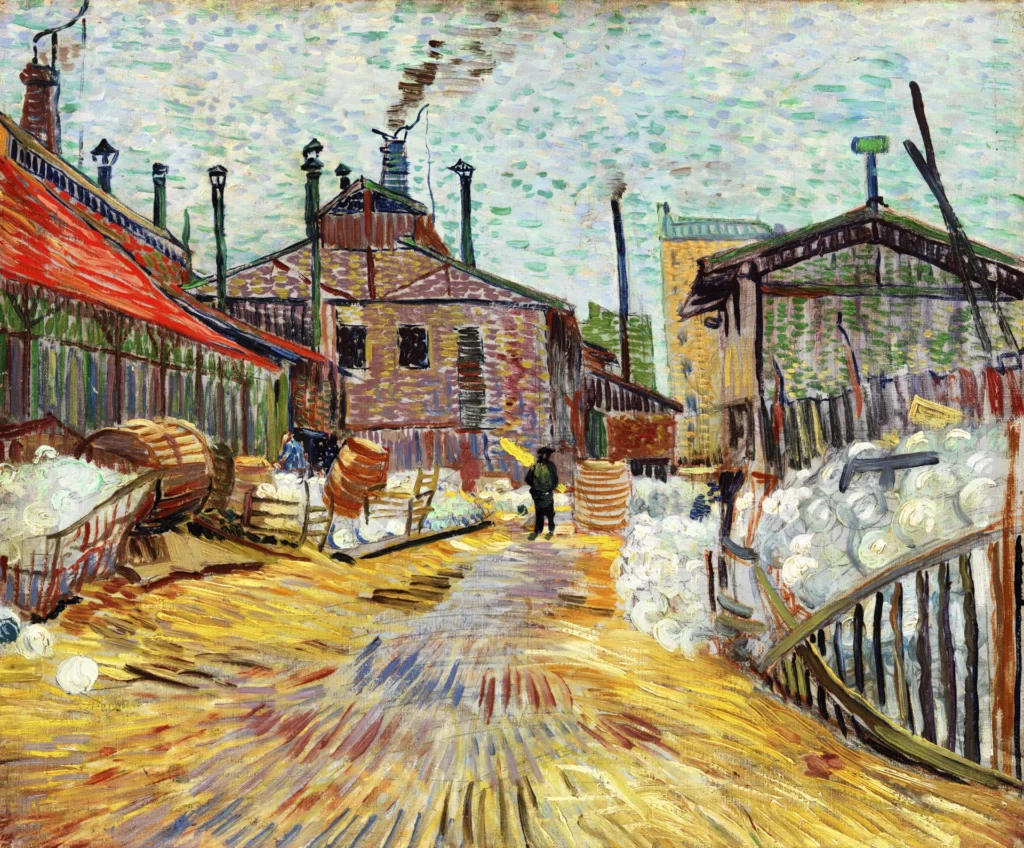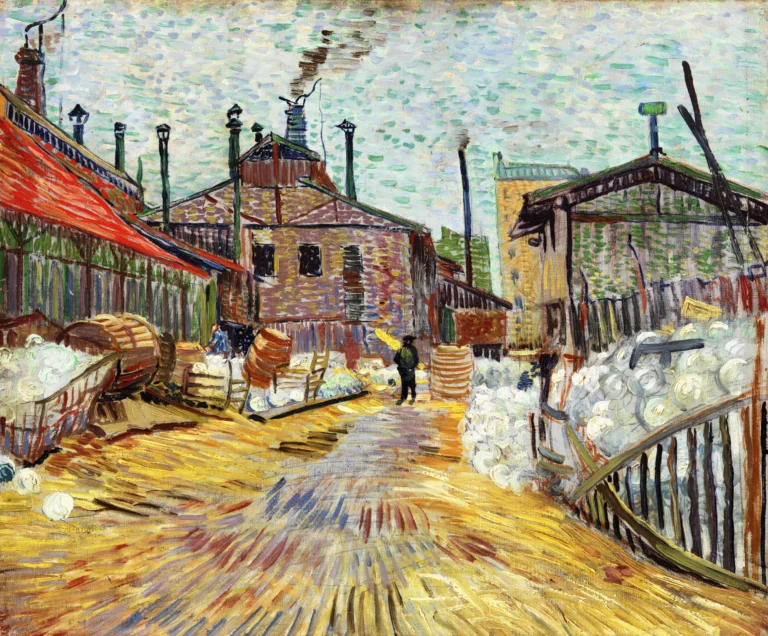The Factory (1887)
Vincent van Gogh's The Factory at Asnières depicts a glass factory in the suburb of Asnières, northwest of Paris, during the summer of 1887. The painting captures the essence of industrialization, showcasing round glass objects awaiting melting, complemented by the bold colors and expressive brushwork characteristic of Van Gogh's evolving style. This work serves as both a portrayal of the changing landscape and a social commentary reflecting the artist’s apprehension towards the impact of industrial encroachment on rural life.
Summer of 1887
About the Artwork
The Factory at Asnières was created during a significant transitional period in Vincent van Gogh's life, marked by his move to Paris and his interaction with a diverse group of avant-garde artists. As Asnières underwent rapid industrialization, Van Gogh found inspiration in the juxtaposition of traditional rural landscapes and the new industrial age. The painting highlights not only the physical aspects of the factory but also the emotional and social implications of such a transformation on the environment and community. Van Gogh's close friendship with fellow artists like Émile Bernard intensified his experimentation with bold colors and techniques derived from Impressionism and Japanese art, contributing to his unique post-impressionist vision.
Did You Know
Liked what you see? Add it to your collection.
Enjoyed reading? Share it.
... continued
Location and Context
The painting depicts a glass factory located in Asnières, a suburb northwest of Paris. During this period, Asnières was undergoing industrialization, and Van Gogh frequently visited the area, painting various scenes including factories, parks, and riverside settings.
Subject Matter
The painting specifically shows a glass factory, with round objects stacked along the pathway. These objects are balls of glass awaiting melting inside the buildings to be formed into lantern globes for gas streetlights and interior fixtures.
Artistic Influence and Style
Van Gogh's work during this period was influenced by various artistic movements, including Impressionism, Pointillism, and Japanese woodblock prints. His time in Paris exposed him to the avant-garde artists of the era, and his paintings from Asnières reflect his experimentation with new techniques and styles. In The Factory at Asnières, Van Gogh used bold colors and expressive brushwork, characteristic of his developing post-impressionist style.
Social Commentary
The painting also serves as a social commentary on the impact of industrialization on rural life. Van Gogh depicted the contrast between the natural landscape and the emerging industrial presence, reflecting his reverence for rural life and his concern about the encroachment of industry.
Collaboration and Inspiration
Van Gogh painted in Asnières alongside his friend Émile Bernard, and the area was also visited by other artists such as Paul Signac. These interactions influenced Van Gogh's work, and the paintings from this period mark a significant development in his artistic style.










